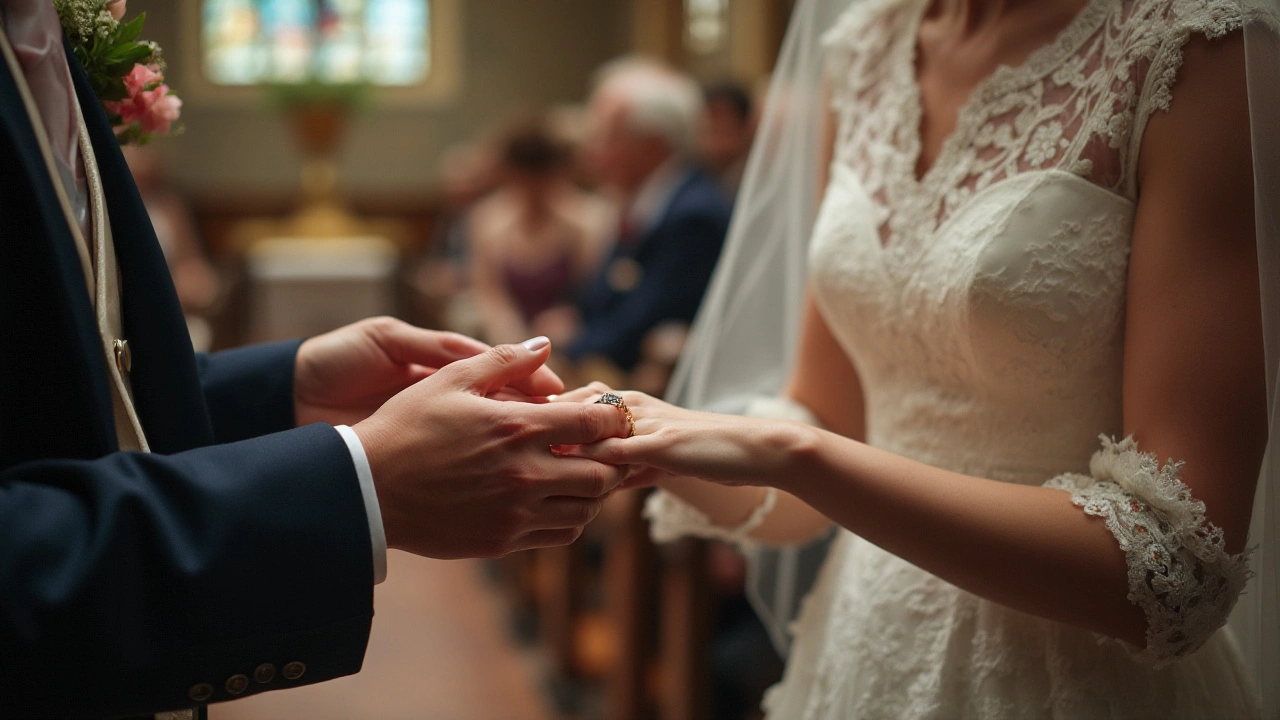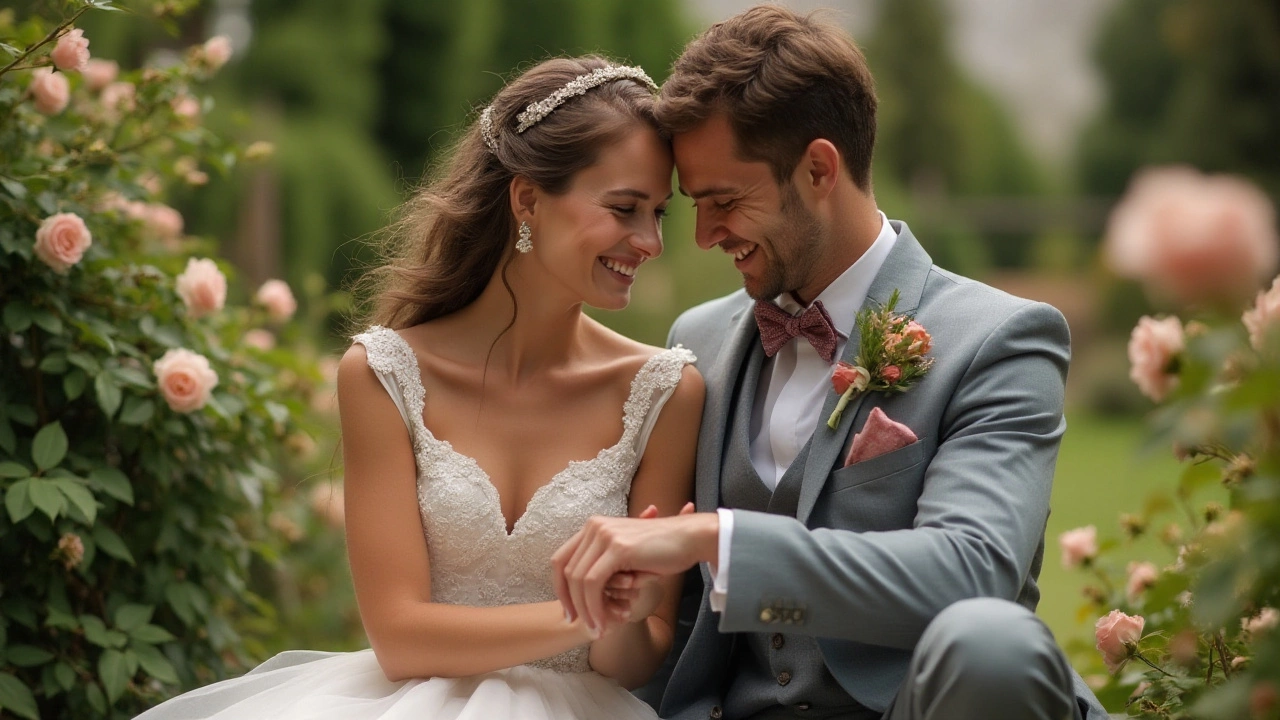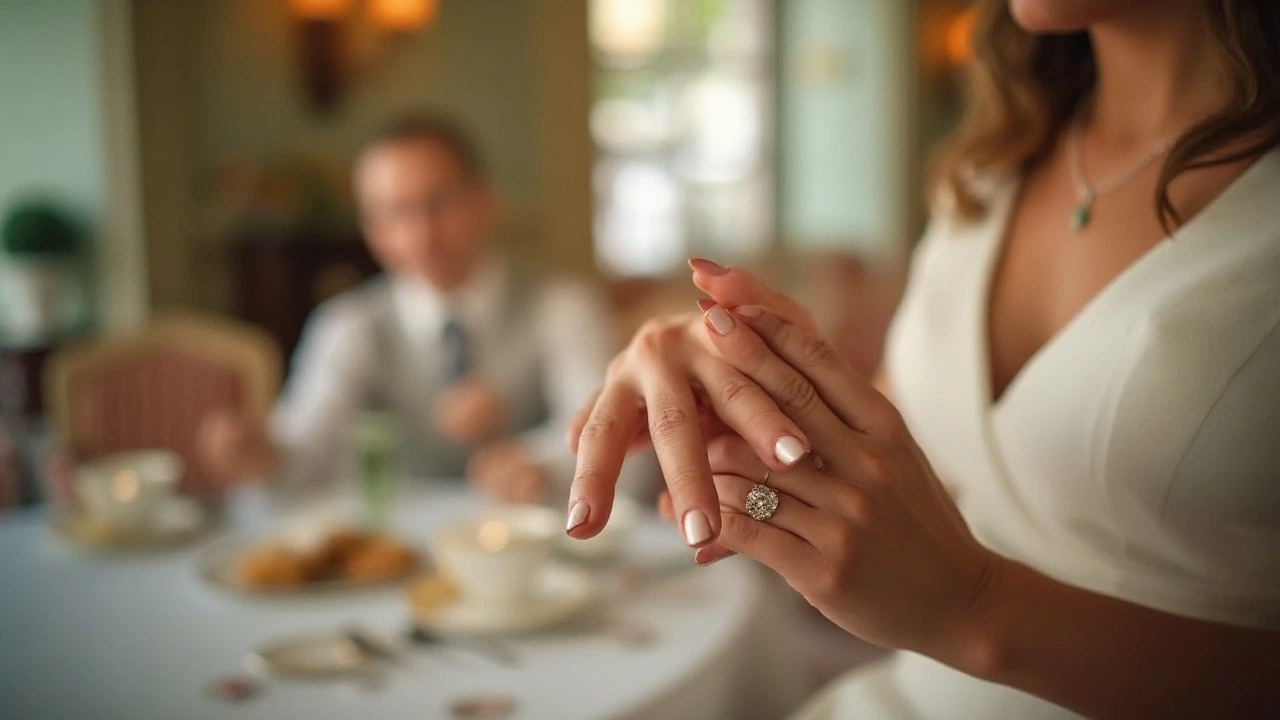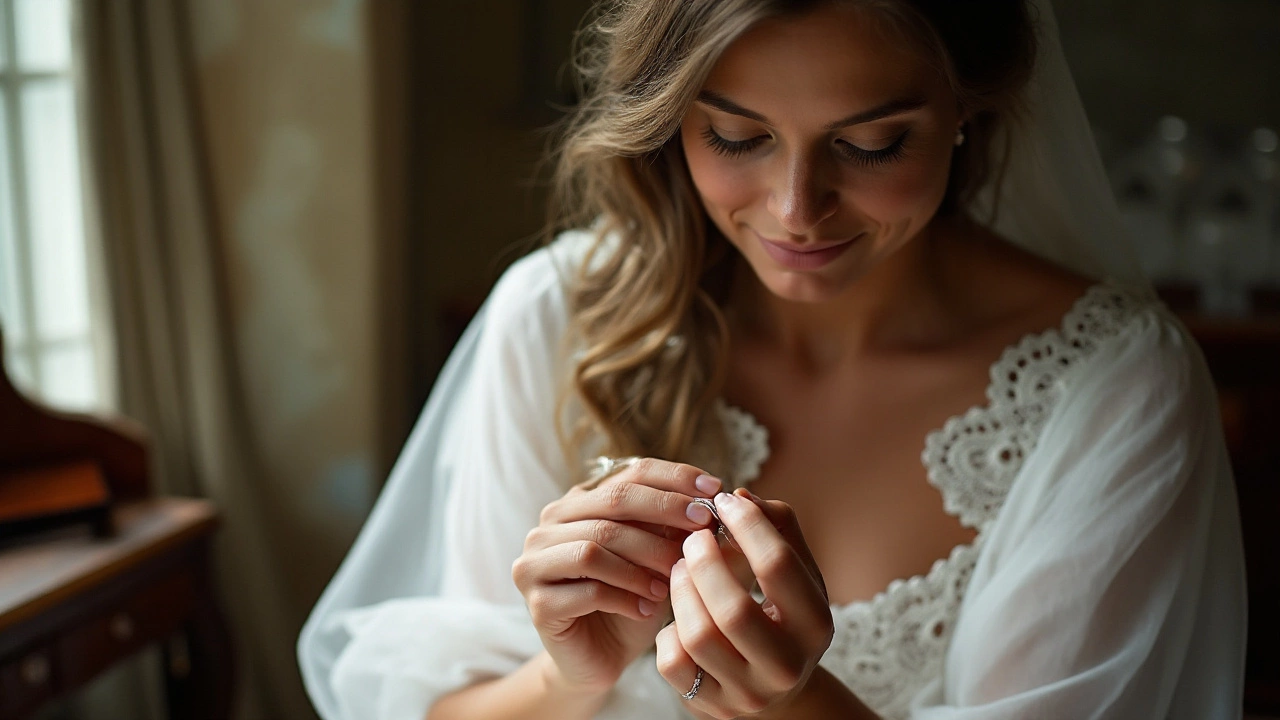The moment you slip an engagement ring onto your finger is filled with hopes and dreams for the future. But as the wedding day dawns, a curious question often arises: should you take it off for the ceremony? For many brides, this decision carries both symbolic and practical importance.
The tradition of removing your engagement ring during the exchange of vows has roots in various cultures and customs. From ensuring the wedding band sits closest to the heart, to protecting your cherished gemstone from potential mishaps, there are multiple reasons behind this practice.
Exploring the nuances of this tradition can offer invaluable insights not only on historical practices but also on personal touches you can bring to your special day. Whether you choose to follow tradition or create your own, understanding this element of wedding etiquette can add another layer of meaning to your ceremony.
- Historical Origins and Symbolic Meanings
- Cultural Perspectives and Traditions
- Practical Tips for Your Wedding Day
- Modern Takes on Ring Etiquette
Historical Origins and Symbolic Meanings
The tradition of moving your engagement ring during the wedding ceremony is steeped in history and symbolism. It is widely believed that this practice dates back to Roman times when the Romans held firm beliefs about the fourth finger on the left hand, which they called the 'vena amoris' or the vein of love. They believed that a vein from this finger led directly to the heart, making it a logical choice for wedding rings. By placing the wedding band on the inside, closest to the heart, the newlyweds signified an unbreakable bond. Over time, this tradition evolved, but the practice of making room for the wedding band by temporarily removing the engagement ring has endured.
Symbolically, the engagement ring represents a promise and a hopeful future, a marker of commitment and love. On the wedding day, the band is often seen as the fulfillment of that promise. In many cultures, the act of exchanging wedding rings is a sacred ritual marking the transition from promises made to promises fulfilled. This is perhaps why the practice of removing the engagement ring is so poignant; it visually signifies a shift from engagement into the eternal bond of marriage.
Not all cultures have embraced this specific gesture, though. In some parts of the world, the engagement and wedding rings are worn on the right hand, and the left is designated for another form of jewelry or remains empty. Yet, it is the context of the practice that underlines its universality. Despite cultural variances, rings have long been a symbol of unity and love, signifying the circle of life and eternity. Even today, many people view the arrangement of rings as an important and meaningful part of their wedding festivities.
"The placement of the ring during a ceremony has as much to do with personal beliefs as cultural customs," says renowned wedding historian Dr. Laurel Bennett. "It's fascinating to see how these traditions adapt with each generation while maintaining their core significance."
Some interesting patterns emerge when considering why the engagement ring might be temporarily removed during the ceremony. For example, in certain traditions, the ring swapping is a meaningful part of ensuring the wedding band takes precedence on the finger, underscoring its importance. This is more than tradition; it's a silent statement of priorities, where the present commitment overshadows past promises. By switching the order, the couple symbolically begins their marital journey with new beginnings at the forefront.
Whether a couple decides to follow this tradition to the letter or chooses a modern twist, understanding its background adds layers of depth to the gesture. Each couple is ultimately free to interpret the tradition in ways most meaningful to them, opting for a practice that reflects their unique journey together into married life.

Cultural Perspectives and Traditions
Engagement and wedding rings are steeped in traditions that vary widely across cultures, creating a fascinating mosaic of customs and beliefs. In many Western cultures, brides often remove their engagement rings during the wedding ceremony. This practice signals respect for an ancient tradition where the wedding band, symbolizing eternity, is placed closest to the heart, ensuring that nothing comes between the bride and groom. The sentiment is deeply rooted in Roman customs, where the left hand's fourth finger, known as the 'vena amoris', was believed to have a direct vein to the heart. Such historical references continue to captivate those who are drawn to romantic ideals of marriage.
In contrast, some cultures see no need to remove the engagement ring. In fact, many Indian brides proudly showcase both rings during their wedding ceremonies. Displaying multiple pieces of jewelry is often seen as a celebration of love and prosperity. For Jewish brides, the exchange of rings holds a special place in the wedding ceremony, with the use of a simple band symbolizing purity and unbroken marriage. Marriage here is considered both a legal and spiritual union, shedding light on the importance of simplicity and intention over grandeur.
Across the globe, traditions have adapted to incorporate personal preferences while still respecting cultural roots. In Asia, where families often deeply involve themselves in wedding decisions, merging traditional and modern elements is common. Each decision, whether to remove or wear both rings, can carry profound meanings unique to the couple and their backgrounds. As these customs face the test of time, they invite couples to create new traditions that honor past generations while marking fresh beginnings. Ethnic variations may also dictate the choice of metals, gemstones, and even the order of jewelry, adding a rich, personalized aspect to weddings.
Cultural historian Mary Seefried notes, "Weddings, universally, have always held the dual role of private celebration and public declaration. No matter the continent, it is this duality that bridges the gap between ancient handfastings and today’s bespoke ceremonies."
Today, brides often choose to navigate these traditions with a blend of creativity and cultural awareness. While adhering to age-old customs, they also imbue their ceremonies with unique personal touches. This respectful balance ensures that cultural wisdom is not lost and continues to inform modern wedding practices. As intercultural marriages become more prevalent, they inspire couples to engage with multiple traditions, offering even greater depth and meaning to their special day. Exploring the rich tapestry of cultural wedding traditions reveals the universal desire for love and unity—a sentiment beautifully reflected in the simplest of gestures.

Practical Tips for Your Wedding Day
Navigating the journey from being engaged to becoming married involves more than just an exchange of vows. It's about celebrating love with family and friends, and making sure every detail is in place, especially when it comes to your precious rings. On the wedding day, many brides ponder on whether to remove their engagement ring for the ceremony. Let's dive into some practical tips that can help you make this decision and keep your rings safe throughout the day.
Firstly, consider the symbolism of the ring placement. Traditionally, the wedding band is worn on the left hand, near the heart, to symbolize eternal love and commitment. To achieve this during the ceremony, many brides choose to switch their engagement ring to the right hand before the ceremony begins. After the exchange of the wedding bands, you can move it back to sit alongside your new band. This not only respects the tradition but also allows for a smooth and uninterrupted ceremony.
"Wearing the wedding band closest to the heart is a timeless tradition understood and celebrated across cultures," notes renowned wedding planner, Sarah McConnell.
It's also essential to plan for any activities that might pose a risk to your rings. Think about your preparations, from hair styling to makeup application, where your engagement ring might get caught in hair or clothing. To avoid any small disasters, it's wise to keep your rings in a secure, dedicated box during pre-ceremony activities. Alternatively, entrust them to a reliable family member or your maid of honor for safekeeping until the ceremony begins.
| Activity | Recommended Action |
|---|---|
| Hair Styling | Keep rings in a box |
| Makeup Application | Place on a different finger |
| Photoshoots | Wear rings as intended |
Your wedding day is undoubtedly filled with emotions and excitement. As you venture through various moments, like holding the bouquet or gently reading vows, keep in mind the comfort and security of your wedding rings. Consider a subtle check now and then to ensure they sit securely on your finger, especially during dynamic activities like dancing. If you're planning an outdoor ceremony, think of adjusting your ring to accommodate any potential swelling from heat or humidity.
In the end, whether or not you decide to wear your engagement ring during the ceremony is a personal choice. But taking these practical steps can ensure peace of mind, enabling you to focus entirely on the joy and magic of your wedding day. Remember, it's all about celebrating love, and as long as you're comfortable with your choice, that's what truly matters.

Modern Takes on Ring Etiquette
In today's weddings, traditions blend beautifully with individual expression, creating a kaleidoscope of choices regarding the engagement and wedding rings. Gone are the days when every couple adhered strictly to time-honored practices. Now, each pair crafts their narrative, sometimes daringly deviating from established norms. Brides and grooms are increasingly personalizing their approach to how and when they wear their rings. They opt for choices that resonate deeply with their journey and sentiment, rather than conforming solely to societal expectations. In recent years, we’ve seen a blend of tradition and innovation resulting in surprising and delightful choices, from exchanging different types of bands in lieu of traditional metals, to unique placement on fingers. Some couples are even choosing to maintain their engagement rings next to the wedding band for the ceremony, defying the once typical practice of switching.
One cannot overlook the influence of modern aesthetics and personal taste reshaping wedding customs. Designers and jewelers report an increasing trend where brides opt for rings that reflect personal stories. Given the freedom to choose, they weave their own love story into their ring's design or the way it’s worn. Notably, millennials and gen Z, a generation known for valuing customization and authenticity, are leading this change. They favor rings that match personal style over traditional uniformity. A bride today might select a custom ring stack, artfully composed of the engagement ring alongside a selection of personalized bands, worn throughout the entire wedding event.
As Natalie Gonia, a celebrated jeweler, states, “There's no right or wrong way to wear a ring that symbolizes such personal milestones. It’s all about what feels genuine to the couple.”Thus, we see brides wearing their precious stones boldly within the ceremony, as a nod to the path they've walked together.
Personal and Practical Considerations
Balancing the traditional with the personal also involves practical decisions. Some couples might consider potential scenarios that could occur during the ceremony or reception. Factors like comfort, the risk of misplacement, and security often play into how rings are managed. Weddings, propelled by an abundance of emotions and activities, sometimes lead to unexpected surprises. Therefore, some brides choose practicality, deciding to keep their engagement rings in a safe place during the festivities to prevent them from being accidentally dropped or forgotten. In these cases, they might don their wedding band solo during the official exchange, then reunite it with their engagement ring later during the celebration.
An additional development in modern ring etiquette involves couples openly discussing and deciding together on how to approach wearing their rings on the big day. Communication and shared decisions become a cherished component of the wedding process, strengthening their unity. Couples find pleasure in seeking mutual understanding of what rings symbolize for each of them and how to best honor that in their ceremony. As preferences evolve, an insightful discussion ahead of the wedding can clarify how to best approach the arrangement, ensuring both partners feel comfortable and satisfied. Indeed, these choices can be incorporated into a wedding rehearsal, alleviating any potential last-minute confusion or stress and making the ceremony flow smoothly.
